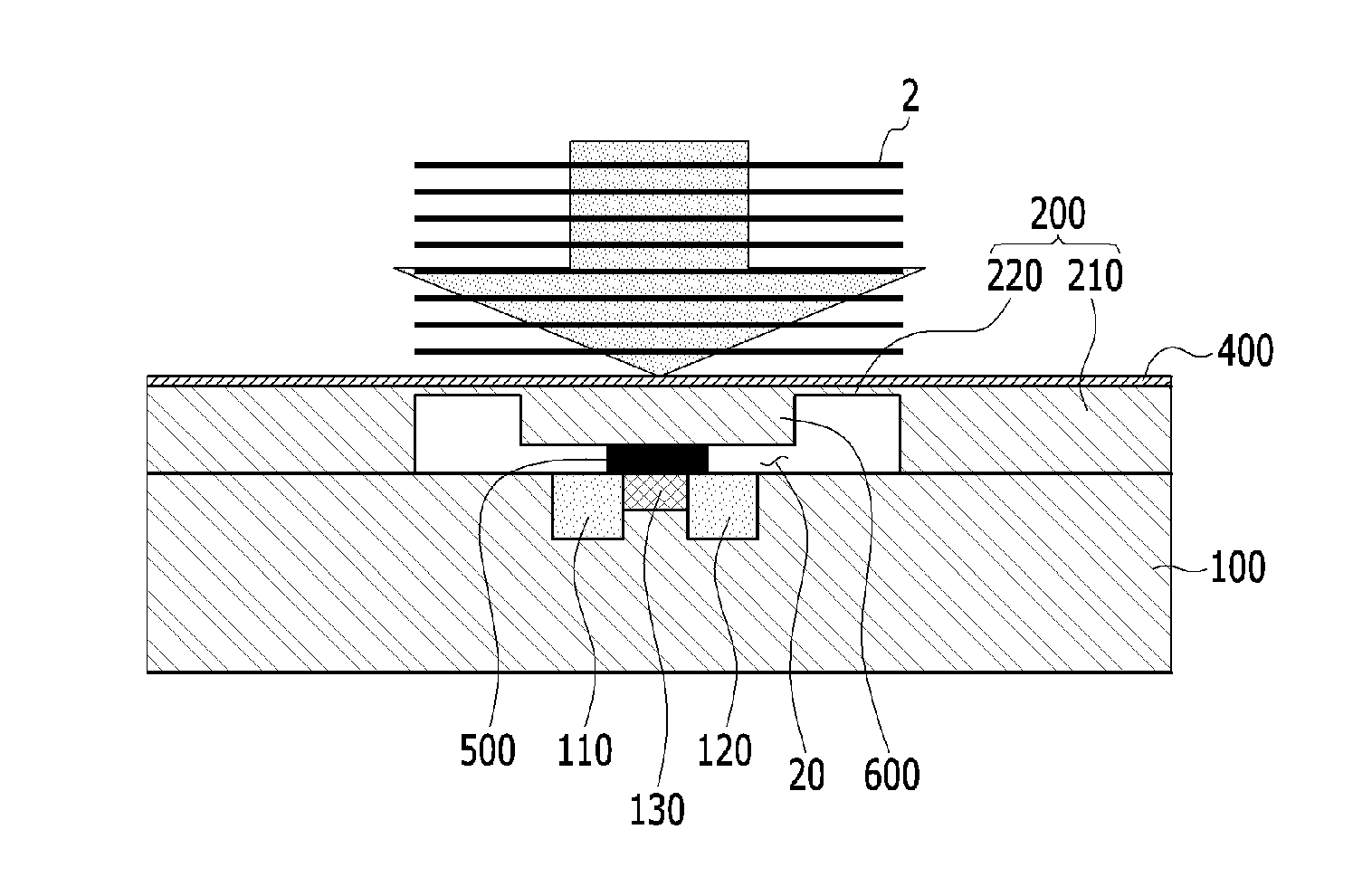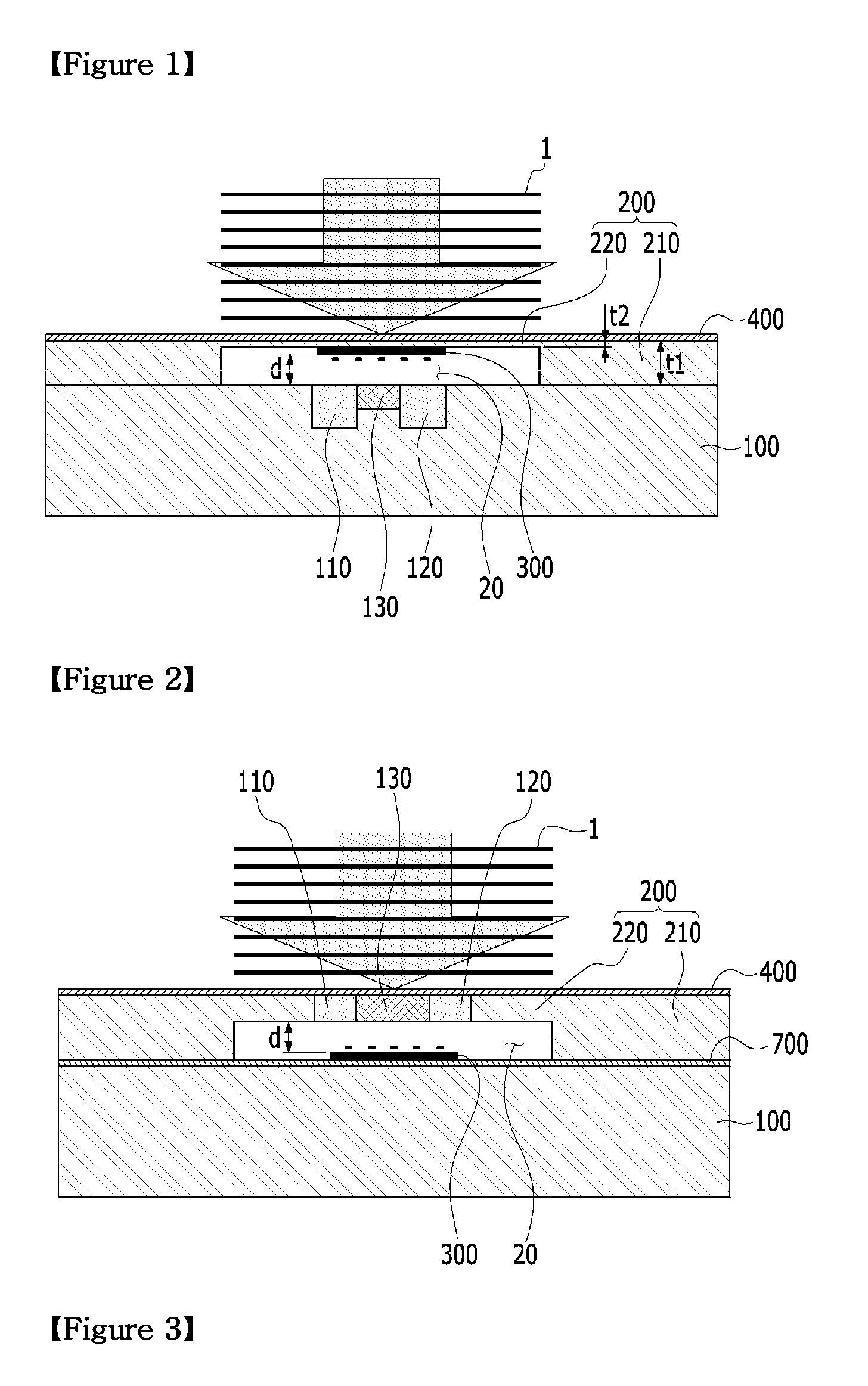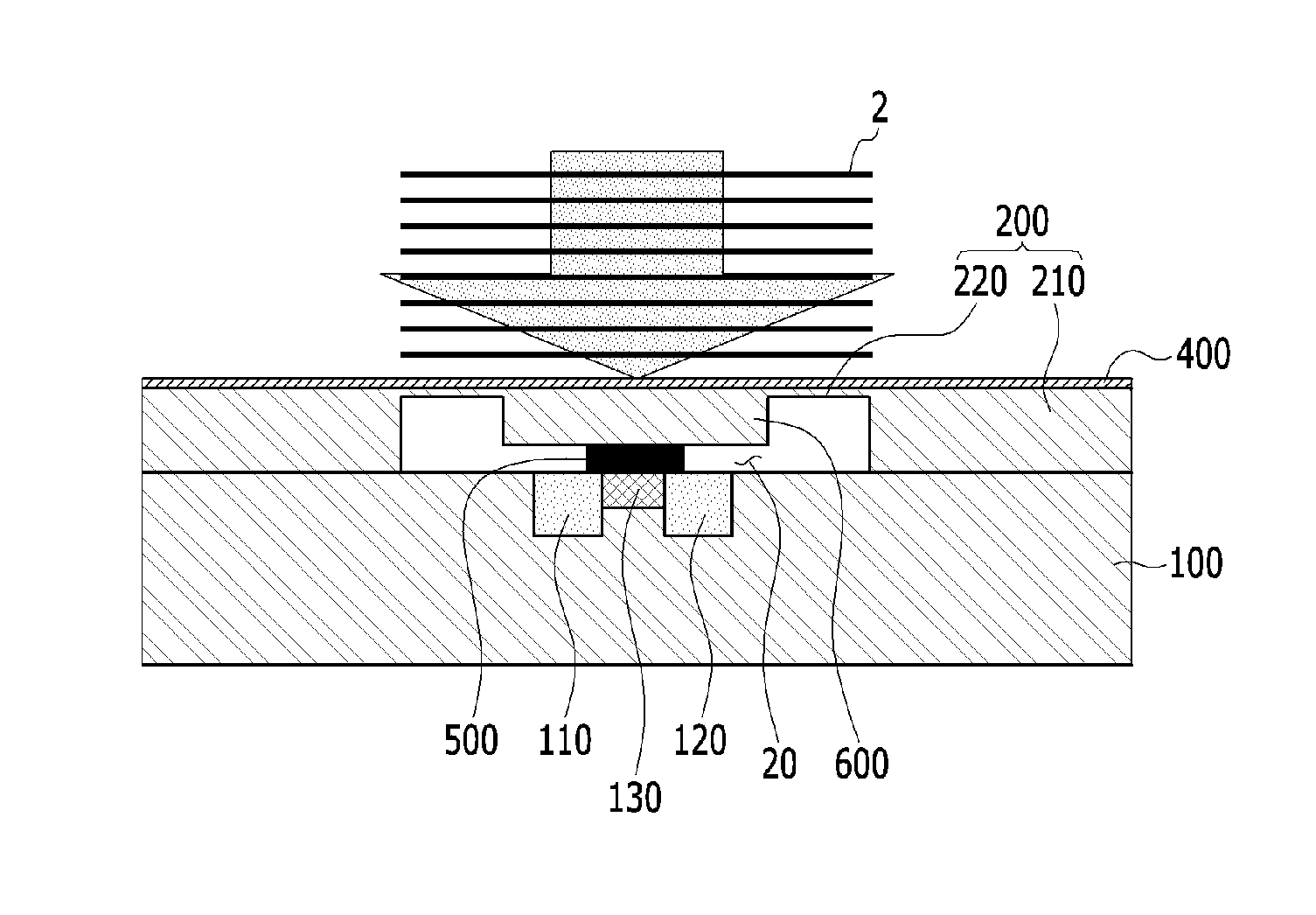Sensor using sensing mechanism having combined static charge and field effect transistor
a sensing mechanism and transistor technology, applied in the direction of instruments, device details, piezoelectric/electrostrictive device details, etc., can solve the problems of large change of sensitivity of the sensor, low sensitivity of the entire sensor, and inability to accurately convert the capacitance change into electrical output signals, etc., to achieve simplified configuration, small shape, and improve sensitivity
- Summary
- Abstract
- Description
- Claims
- Application Information
AI Technical Summary
Benefits of technology
Problems solved by technology
Method used
Image
Examples
Embodiment Construction
[0037]Hereinafter, the present invention will be described more fully hereinafter with reference to the accompanying drawings, in which exemplary embodiments of the invention are shown. As those skilled in the art would realize, the described embodiments may be modified in various different ways, all without departing from the spirit or scope of the present invention.
[0038]A part irrelevant to the description will be omitted to clearly describe the present invention, and the same elements will be designated by the same reference numerals throughout the specification.
[0039]Now, a sensor using a sensing mechanism combining an electrostatic unit and an electric field effect transistor according to a first exemplary embodiment of the present invention will be described with reference to FIG. 1.
[0040]FIG. 1 is a cross-sectional view of a sensor using a sensing mechanism combining an electrostatic unit and an electric field effect transistor according to a first exemplary embodiment of th...
PUM
 Login to View More
Login to View More Abstract
Description
Claims
Application Information
 Login to View More
Login to View More - R&D
- Intellectual Property
- Life Sciences
- Materials
- Tech Scout
- Unparalleled Data Quality
- Higher Quality Content
- 60% Fewer Hallucinations
Browse by: Latest US Patents, China's latest patents, Technical Efficacy Thesaurus, Application Domain, Technology Topic, Popular Technical Reports.
© 2025 PatSnap. All rights reserved.Legal|Privacy policy|Modern Slavery Act Transparency Statement|Sitemap|About US| Contact US: help@patsnap.com



